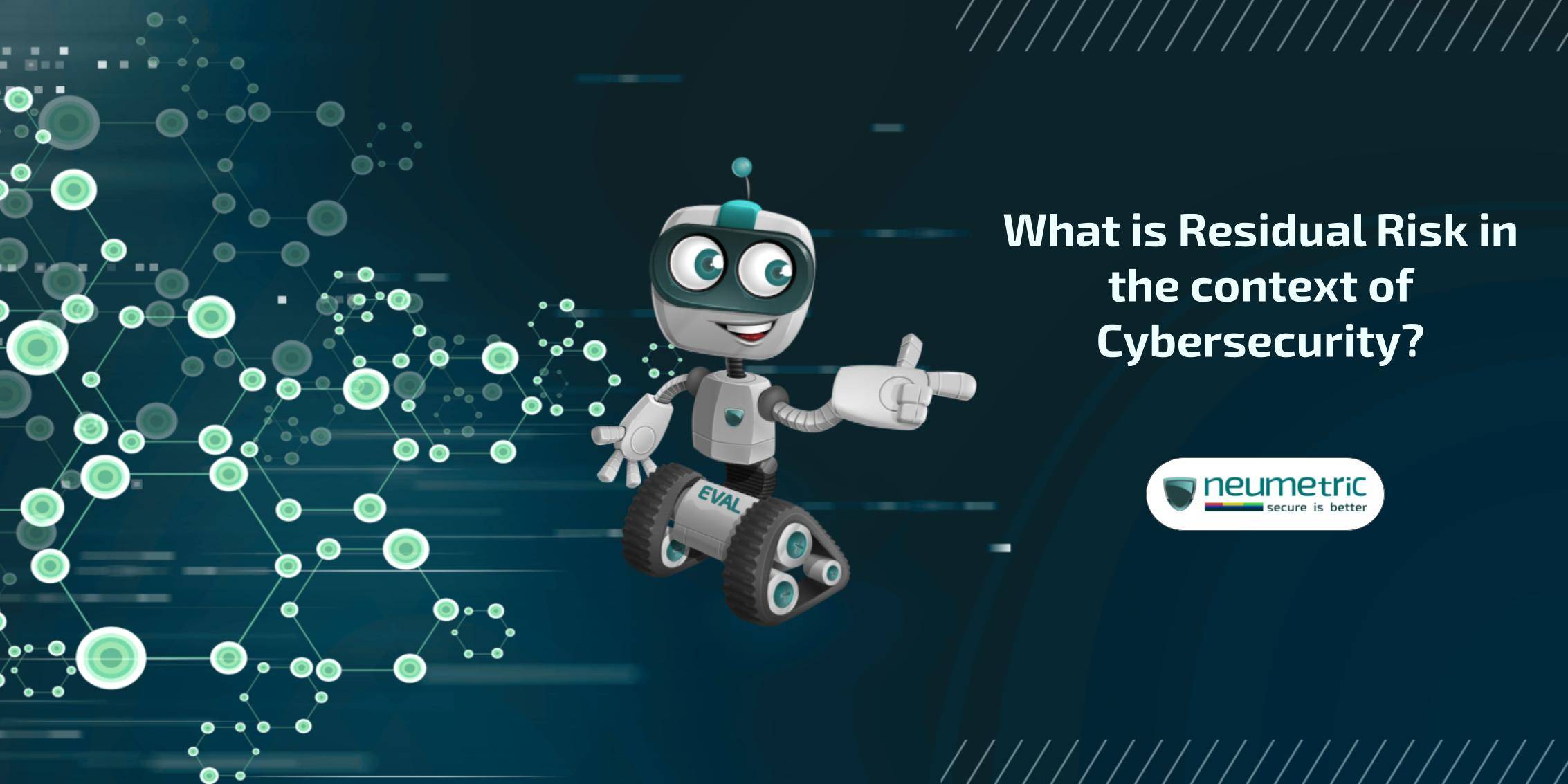Table of Contents
ToggleWhat is Residual Risk in the context of Cybersecurity?
Introduction
In the intricate labyrinth of cybersecurity, where digital assailants lurk in the shadows & data is the prized treasure, understanding the concept of residual risk becomes paramount. But what exactly is residual risk in the context of cybersecurity? How does it affect businesses & individuals alike? Join us as we embark on a journey to demystify this elusive term & equip ourselves with the knowledge to navigate the perilous waters of cyberspace securely!
Understanding Risk
Risk, in its essence, refers to the potential for loss or harm stemming from various factors. It’s an integral part of every business operation & decision-making process. Whether it’s financial risk, operational risk or cybersecurity risk, acknowledging & addressing risk is fundamental to ensuring business continuity & security.
Types of Risks
Before we delve into what risks are considered residual, let’s briefly touch upon the different types of risks organizations face:
- Financial Risk: Relates to potential losses due to market fluctuations, economic downturns or investment decisions.
- Operational Risk: Arises from internal processes, systems or people, including errors, fraud or system failures.
- Cybersecurity Risk: Involves threats to digital assets, such as data breaches, malware attacks or unauthorized access.
Among the myriad risks organizations encounter, cybersecurity risks are particularly menacing in today’s interconnected world. These risks encompass a wide range of threats, including ransomware attacks, phishing attempts & vulnerabilities in software or network infrastructure.
What is Residual Risk in the context of Cybersecurity?
Residual risk, within the expansive domain of cybersecurity, encapsulates the enduring level of risk that persists even after organizations have meticulously implemented a plethora of security measures to neutralize known threats & vulnerabilities. It embodies the subtle yet formidable potential for harm or loss that stubbornly endures despite the comprehensive deployment of preventive measures. In essence, it serves as a stark reminder of the ever-evolving & adaptive nature of cyber threats, persisting as an elusive shadow in the wake of seemingly impenetrable security protocols & defenses.
Components & Factors of Residual Risk
- Components
It comprises several components, including:
- Inherent Risk: The baseline level of risk inherent in a system or process before any controls are applied.
- Control Risk: The risk that remains after implementing security controls to mitigate inherent risk.
- Residual Risk: The risk that remains after accounting for both inherent risk & the effectiveness of controls.
- Factors
Several factors influence its level, such as the effectiveness of security controls, the frequency & sophistication of threats, the value of assets being protected & the organization’s risk tolerance.
How is Residual Risk Calculated?
Calculating residual risk involves a multifaceted approach that takes into account various factors, including:
- The effectiveness of implemented security controls
- The likelihood of threat occurrence
- The potential impact of a successful cyber attack
- The organization’s risk tolerance level
By assessing these factors comprehensively, organizations can gauge the residual risk accurately & tailor their cybersecurity strategies accordingly.
Risk Assessment: The first step in calculating residual risk is conducting a comprehensive risk assessment. This involves identifying potential threats, vulnerabilities & impacts on organizational assets. By quantifying these factors, organizations can prioritize risks based on their likelihood & potential consequences.
Risk Mitigation: Once risks are identified, organizations must implement controls & mitigation strategies to reduce their impact. These measures may include software patches, encryption protocols, access controls & employee training programs aimed at enhancing cybersecurity awareness.
Remaining Risk: After implementing mitigation measures, residual risk is assessed by determining the remaining level of risk exposure. This residual risk factor helps organizations gauge the effectiveness of their security controls & identify areas for further improvement.
Importance of Residual Risk
Residual risk serves as a crucial metric for organizations & individuals alike due to several compelling reasons:
Comprehensive Risk Management: Understanding residual risk enables organizations to adopt a proactive approach to risk management. By identifying & acknowledging the residual risk, they can implement additional safeguards & contingency plans to mitigate potential threats effectively.
Business Continuity: In today’s digitally-driven landscape, the uninterrupted operation of business processes is imperative. Residual risk assessment facilitates the identification of vulnerabilities that could disrupt critical operations, allowing organizations to fortify their infrastructure & ensure seamless continuity in the face of cyber threats.
Regulatory Compliance: With the proliferation of data protection regulations such as General Data Protection Regulation [GDPR] & California Consumer Privacy Act [CCPA], organizations are obligated to safeguard sensitive information & uphold stringent security standards. Residual risk assessment aids in demonstrating compliance with regulatory requirements by showcasing proactive risk mitigation efforts & due diligence in protecting data assets.
Managing Residual Risk
Now that we’ve grasped the significance of residual risk, let’s delve into actionable strategies to mitigate this lingering threat & bolster cyber resilience:
- Continuous Monitoring & Assessment: To bolster cybersecurity defenses, organizations must implement robust monitoring tools & mechanisms capable of detecting potential threats & vulnerabilities in real-time. Utilizing advanced monitoring solutions enables proactive threat detection, allowing organizations to swiftly respond to emerging cyber threats before they escalate into significant security incidents. Additionally, conducting regular risk assessments & audits is imperative to evaluate the effectiveness of existing security controls comprehensively. By conducting thorough assessments, organizations can identify weaknesses in their cybersecurity posture & prioritize areas for improvement, thereby enhancing overall resilience against cyber threats.
- Strengthening Security Controls: Enhancing endpoint security is paramount in mitigating cyber risks effectively. By deploying the latest antivirus software, firewalls & intrusion detection systems, organizations can fortify their defenses against malware, phishing attempts & other malicious activities targeting endpoints. Furthermore, implementing Multi-factor Authentication [MFA] & encryption protocols significantly enhances data protection measures, thwarting unauthorized access attempts & safeguarding sensitive information from potential breaches. By fortifying security controls at various layers of the IT infrastructure, organizations can establish a robust defense-in-depth strategy to mitigate cyber threats comprehensively.
- Employee Education & Awareness: Cultivating a culture of cybersecurity awareness among employees is essential for mitigating human error-related risks & enhancing overall organizational security. Comprehensive training programs & simulated phishing exercises help educate employees about common cyber threats, phishing tactics & best practices for safeguarding sensitive information. By raising awareness about cybersecurity risks & emphasizing the importance of adhering to security policies & procedures, organizations can empower employees to recognize & report potential security incidents promptly. Moreover, promoting a security-conscious culture fosters a sense of collective responsibility among employees, contributing to a more resilient cybersecurity posture across the organization.
- Incident Response Planning: Developing a robust incident response plan is critical for effectively mitigating cyber threats & minimizing the impact of security incidents. The incident response plan should outline clear procedures for detecting, containing & mitigating cyber threats promptly. Regular tabletop exercises & simulations help validate the efficacy of the incident response plan & ensure seamless coordination among stakeholders during crisis situations. By proactively preparing for potential security incidents, organizations can minimize downtime, reduce financial losses & preserve their reputation & trustworthiness among stakeholders. Additionally, conducting post-incident reviews & lessons learned sessions enables organizations to identify areas for improvement & refine their incident response strategies continuously.
Examples of Residual Risk
To provide a tangible example elucidating the intricacies of residual risk, let’s envision a scenario where a reputable company diligently fortifies its digital fortress by installing robust firewall protection, a stalwart defense mechanism aimed at thwarting external threats & unauthorized access attempts. While this proactive measure significantly diminishes the likelihood of successful incursions from external actors, it’s imperative to recognize that the cybersecurity landscape is multifaceted. Despite the formidable barrier erected by the firewall, lurking within the company’s digital ecosystem lie potential vulnerabilities emanating from internal sources. These may manifest in the form of inadvertent errors due to employee negligence or, in more sinister instances, deliberate acts of malfeasance stemming from disgruntled insiders or malicious actors with access privileges. Consequently, even in the presence of stringent perimeter defenses, the specter of residual risk persists, underscoring the imperative for organizations to adopt a holistic & vigilant approach to cybersecurity.
Residual Risk vs. Inherent Risk
Distinguishing between residual risk & inherent risk is paramount for developing a robust risk management strategy within the realm of cybersecurity. Inherent risk serves as the bedrock, forming the baseline level of risk inherent within an organization’s operations. It encompasses the innate susceptibility to potential threats & vulnerabilities deeply ingrained in the organization’s infrastructure, processes & human elements. Essentially, inherent risk represents the intrinsic predisposition to risk within the organization’s DNA, providing a foundational understanding of the fundamental vulnerabilities that exist irrespective of any proactive interventions.
On the contrary, residual risk emerges as the enduring residue left behind even after diligent efforts to mitigate risk through the implementation of various risk mitigation measures & security controls. It embodies the lingering remnants of risk that persist despite earnest endeavors to fortify the organization’s defenses against cyber threats. Residual risk underscores the stark reality that complete eradication of risk is often unattainable, as there will always be residual remnants that evade elimination. While inherent risk delineates the foundational predisposition to risk, residual risk delineates the persistent remnants of risk that persistently evade eradication, challenging organizations to continually refine & adapt their cybersecurity strategies to address evolving threats.
Benefits of Addressing Residual Risk
Addressing residual risk offers several benefits, including:
- Enhanced security posture
- Improved regulatory compliance
- Protection of sensitive data & assets
- Preservation of brand reputation & customer trust
Conclusion
In conclusion, residual risk stands as a pivotal element in the realm of cybersecurity, representing the lingering threat that persists despite the implementation of various security controls. It serves as a crucial indicator of the effectiveness of an organization’s cybersecurity measures, highlighting areas where further attention & enhancement are needed. By meticulously understanding, continuously assessing & proactively managing residual risk, organizations can bolster their cybersecurity posture & better protect their digital assets from evolving threats in an increasingly interconnected world.
Embracing a comprehensive approach to residual risk management not only enhances an organization’s resilience to cyber threats but also fosters a culture of vigilance & preparedness. By prioritizing the mitigation of residual risk, organizations can strengthen their defenses, minimize the potential impact of security incidents & safeguard their reputation & trustworthiness among stakeholders. In essence, the proactive management of residual risk is not just a cybersecurity strategy but a fundamental component of organizational resilience & long-term success in the digital age.
Frequently Asked Questions [FAQ]
How is residual risk different from inherent risk?
Residual risk & inherent risk are distinct concepts within the realm of cybersecurity. Residual risk pertains to the risk that remains after implementing various security controls, whereas inherent risk represents the inherent level of risk present in an organization’s operations before any controls are applied. Essentially, residual risk reflects the residual danger that persists despite preventive measures, while inherent risk denotes the foundational risk inherent in the organization’s structure.
Why is continual monitoring essential for managing residual risk?
Continual monitoring plays a pivotal role in managing residual risk within cybersecurity. By engaging in continuous surveillance of the digital landscape, organizations can promptly detect & respond to emerging threats & vulnerabilities. This proactive approach enables them to adapt their security measures in real-time, minimizing the impact of residual risk. Without continual monitoring, organizations risk overlooking evolving threats, leaving them vulnerable to potential breaches & security incidents.
What are some examples of mitigation strategies for residual risk?
Mitigation strategies for residual risk encompass a diverse range of proactive measures aimed at bolstering cybersecurity defenses. Examples include regularly applying software patches to address known vulnerabilities, implementing robust encryption protocols to safeguard sensitive data, enforcing stringent access controls to limit unauthorized access & conducting comprehensive employee training programs to enhance cybersecurity awareness & vigilance. These strategies collectively contribute to reducing the residual risk & fortifying the organization’s overall security posture.





